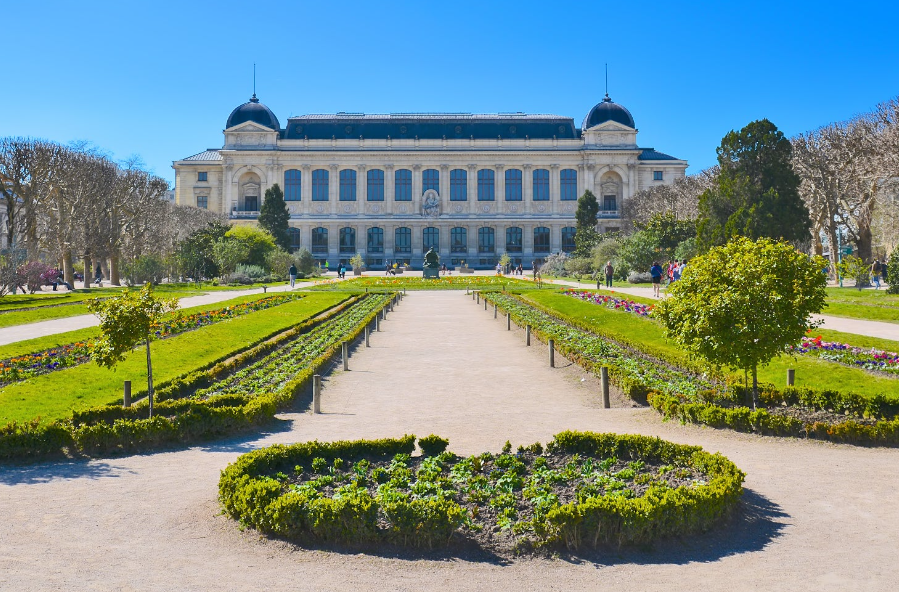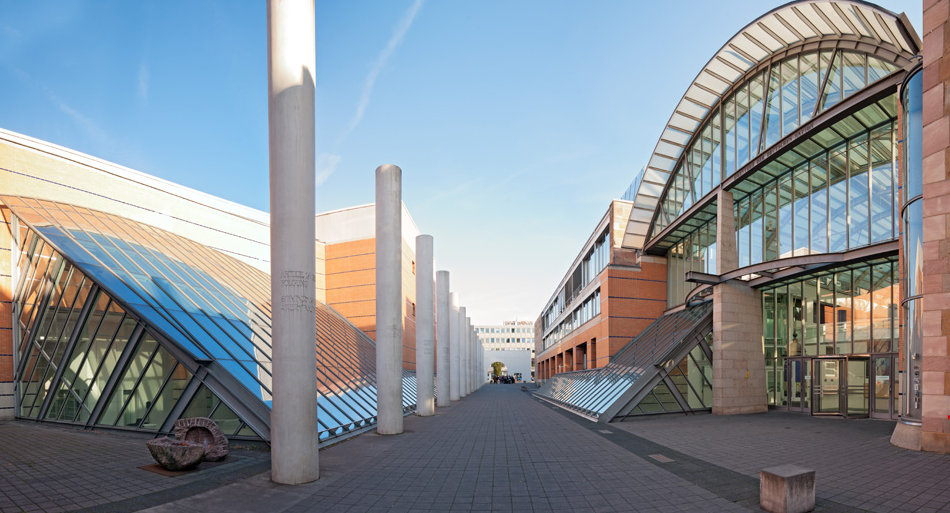Let’s explore Chile National Museum. The Chilean National Museum of Natural History, located in Santiago, is a captivating institution that allows visitors to delve into the country’s rich natural heritage. With its extensive collections, educational programs, and commitment to research and conservation, the museum offers a comprehensive and engaging experience for people of all ages. In this article, we will explore the history, exhibits, research initiatives, and the overall significance of the Chilean National Museum of Natural History.
The Chilean National Museum of Natural History, commonly known as the National Museum, holds a prominent place in the heart of Chile’s capital city, Santiago. Established in 1830, it is one of the oldest and most revered natural history museums in South America. The museum’s primary objective is to preserve, study, and showcase the diverse flora, fauna, geology, and cultural heritage of Chile.
History and Background of the Chile National Museum
The museum’s history dates back to the early 19th century when the Chilean government recognized the need for a scientific institution to study and document the country’s natural resources. The museum began as a small collection housed within the University of Chile. Over time, it grew in size and significance, eventually moving to its current location in Quinta Normal Park in 1911.
Importance and Significance of the Chile National Museum
The Chilean National Museum of Natural History holds immense importance for both scientists and the general public. As a scientific institution, it serves as a valuable resource for researchers, aiding them in understanding and documenting the country’s biodiversity. Additionally, the museum plays a crucial role in promoting environmental awareness and education, helping visitors appreciate and conserve Chile’s natural treasures.
Collections and Exhibits at Chile National Museum
The museum boasts an impressive collection spanning various disciplines, including paleontology, zoology, botany, and anthropology. Each collection offers a glimpse into Chile’s natural and cultural history.
Paleontology
The paleontology exhibit showcases fossil specimens that provide insights into the ancient life forms that once inhabited the region. Visitors can marvel at the skeletal remains of dinosaurs, prehistoric mammals, and marine creatures, offering a window into Chile’s geological past.
Zoology
The zoology collection features an extensive array of preserved animals, including mammals, birds, reptiles, and insects. The exhibits highlight Chile’s unique biodiversity, illustrating the wide range of species that call the country home.
Botany
With its diverse landscapes, Chile is home to a rich variety of plant species. The botany exhibit at the museum showcases a vast collection of preserved plant specimens, allowing visitors to explore the country’s distinct ecosystems, from the arid deserts of the north to the lush forests of the south.
Anthropology
The anthropology section of the museum offers a fascinating glimpse into the cultural heritage of Chile’s indigenous peoples. Through carefully curated artifacts and exhibits, visitors can learn about the traditions, customs, and history of the Mapuche, Rapa Nui, and other indigenous communities.
Research and Conservation Efforts by Chile National Museum
The Chilean National Museum of Natural History is not only a repository of knowledge but also a hub for scientific research and conservation initiatives. The museum actively collaborates with national and international organizations to conduct studies on biodiversity, climate change, and ecosystem dynamics. By understanding the natural world better, the museum contributes to the conservation and sustainable management of Chile’s natural resources.
Outreach and Education Programs
The museum is committed to promoting environmental education and raising awareness among the general public. It offers a range of educational programs, including guided tours, workshops, and lectures, aimed at engaging visitors of all ages. These initiatives encourage a deeper understanding of the natural world and foster a sense of responsibility towards its preservation.
Architecture and Facilities
The Chilean National Museum of Natural History is housed in a stunning neoclassical building, a true architectural gem. The museum’s spacious galleries provide an ideal setting for exhibits, allowing visitors to explore and appreciate the collections in a comfortable and immersive environment. The facility also includes state-of-the-art research laboratories, storage facilities, and lecture halls to support the museum’s diverse activities.
Visitor Experience and Amenities
Visitors to the museum can expect a memorable and enriching experience. The museum provides informative audio guides, interactive displays, and multimedia presentations that enhance understanding and engagement. Additionally, there is a café, gift shop, and outdoor spaces where visitors can relax and reflect on their visit.
Notable Artifacts and Specimens
Among the many treasures housed in the museum, several artifacts stand out for their cultural and scientific significance. These include the remains of a prehistoric whale, the original Rapa Nui moai statue, and the preserved flora and fauna from Chile’s remote Juan Fernández Islands. These artifacts offer a glimpse into Chile’s geological, cultural, and biological heritage.
Collaboration and Partnerships
The Chilean National Museum of Natural History actively collaborates with other institutions, both within Chile and abroad. These partnerships facilitate the exchange of knowledge, the sharing of resources, and the development of joint research projects. By working together, these organizations contribute to a deeper understanding of Chile’s natural history and its global significance.
Impact on Tourism and Local Economy
The Chilean National Museum of Natural History plays a crucial role in promoting tourism and contributing to the local economy. It attracts visitors from around the world, who not only explore the museum but also contribute to the broader tourism industry in Santiago. The museum’s presence has a positive economic impact, creating jobs and generating revenue for the local community.
Challenges and Future Developments for Chile National Museum
While the Chilean National Museum of Natural History has achieved significant milestones, it also faces challenges. Limited funding, the need for infrastructure improvements, and the preservation of delicate specimens present ongoing hurdles. However, the museum remains committed to overcoming these challenges and enhancing its facilities and programs to provide an even more enriching experience for future visitors.
Conclusion
The Chilean National Museum of Natural History stands as a beacon of knowledge, preserving and showcasing Chile’s natural and cultural heritage. Through its collections, exhibits, research initiatives, and educational programs, the museum provides a captivating and immersive experience for visitors. It fosters an appreciation for the country’s biodiversity, encourages environmental stewardship, and contributes to the advancement of scientific understanding. A visit to the museum is an unforgettable journey through Chile’s natural wonders.
FAQs
Q1: Is the Chilean National Museum of Natural History suitable for children?
Absolutely! The museum offers educational programs and exhibits designed to engage and educate visitors of all ages, including children. It’s a great opportunity for kids to learn about Chile’s natural heritage in a fun and interactive way.
Q2: Can I take photographs inside the museum?
Yes, you are generally allowed to take photographs inside the museum. However, certain exhibits may have restrictions for conservation purposes. It’s best to check with the museum staff or signage before taking photographs.
Q3: Are there guided tours available at the museum?
Yes, the museum offers guided tours led by knowledgeable staff members who provide detailed insights into the exhibits. These tours are a great way to enhance your visit and learn more about the museum’s collections.
Q4: How long does it take to explore the entire museum?
The time needed to explore the entire museum can vary depending on individual interests and the level of detail one wishes to delve into. On average, visitors spend around two to three hours exploring the museum’s exhibits.
Q5: Can I buy souvenirs at the museum?
Yes, the museum has a gift shop where visitors can purchase a variety of souvenirs, including books, postcards, replicas of artifacts, and other nature-themed items.
References
- Chilean National Museum of Natural History Official Website: https://www.mnhn.cl/
- “Chilean National Museum of Natural History” – Wikipedia: https://en.wikipedia.org/wiki/Chilean_National_Museum_of_Natural_History
- “Chile’s Natural History Museum: A Hidden Gem in Santiago” – Culture Trip: https://theculturetrip.com/south-america/chile/articles/chiles-natural-history-museum-hidden-gem-santiago/

